 |
 |
Our enthusiastic and extremely knowledgeable perennials team is here to answer your questions and help you choose the best perennials for your situation. There’s always something in bloom for sun, shade, butterflies, birds or deer resistance as well as a variety of bulbs for your space.
Stroll through our time-tested favorites and introduce yourself to the newest varieties. We garden with perennials too; we love them and it shows!
|
109 found, showing page 5 of 8
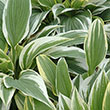
Medium green leaves with wavy, white margins and gray-green streaks. USDA 3-9
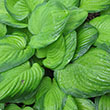
Bright & dark green foliage. Fragrant white blooms. USDA 3-8
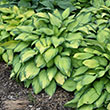
Green foliage with chartreuse splashes. Lavender blooms. USDA 3-9
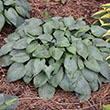
Blue-green heart-shaped foliage. Fragrant white blooms. USDA 3-8
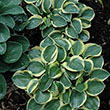
Dark-green foliage is accented with golden-yellow margins. Compact. USDA 3-9
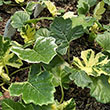
Bold, variegated evergreen foliage with a mounding, dense base. Tall flowers spikes appear early to mid summer. USDA 7-10.
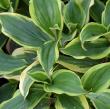
Purpl and yellow blooms. Varigated foliage. Naturalizing. USDA 6-8
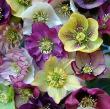
Singe and double blooms in multiple colors. Compact. USDA 4-8
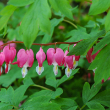
Height: 3 feet
Spacing: 30 inches
Sunlight: partial shade full shade
Hardiness Zone: 1b
Other Names: Old Fashioned Bleeding Heart
Description:
Bushy upright mounded selection features blue-green fern-like foliage and arching stems of heart shaped locket flowers with white protruding petals; excellent for shaded borders and beds; beautiful cut flower; goes into summer dormancy
Ornamental Features:
Common Bleeding Heart features delicate nodding pink heart-shaped flowers with white tips dangling from the stems from late spring to early summer. Its ferny compound leaves remain bluish-green in color throughout the season.
Landscape Attributes:
Common Bleeding Heart is an herbaceous perennial with a mounded form. Its relatively fine texture sets it apart from other garden plants with less refined foliage.
This plant will require occasional maintenance and upkeep, and should be cut back in late fall in preparation for winter. It is a good choice for attracting butterflies to your yard, but is not particularly attractive to deer who tend to leave it alone in favor of tastier treats. It has no significant negative characteristics.
Common Bleeding Heart is recommended for the following landscape applications:
- Mass Planting
- General Garden Use
- Planting & Growing
Common Bleeding Heart will grow to be about 3 feet tall at maturity, with a spread of 3 feet. When grown in masses or used as a bedding plant, individual plants should be spaced approximately 30 inches apart. It grows at a medium rate, and under ideal conditions can be expected to live for approximately 15 years. As an herbaceous perennial, this plant will usually die back to the crown each winter, and will regrow from the base each spring. Be careful not to disturb the crown in late winter when it may not be readily seen! As this plant tends to go dormant in summer, it is best interplanted with late-season bloomers to hide the dying foliage.
This plant does best in partial shade to shade. It prefers to grow in average to moist conditions, and shouldn't be allowed to dry out. It is not particular as to soil pH, but grows best in rich soils. It is somewhat tolerant of urban pollution. Consider applying a thick mulch around the root zone over the growing season to conserve soil moisture. This species is not originally from North America. It can be propagated by division.
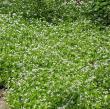
White blooms. Fragrant lance-shaped dark green leaves. Edible foliage. Tolerates deep shade. USDA 4-8
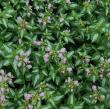
Pink blooms. Green leaves have white diamond. Groundcover. USDA 3-8
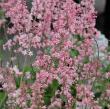
Known for its large, palmate leaves. Tall stalks of pinkish-white flowers in spring. USDA 4-9
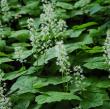
Plant Height: 6 inches
Flower Height: 12 inches
Spacing: 18 inches
Sunlight: partial shade full shade
Hardiness Zone: 3a
Ornamental Features:
Creeping Foamflower has masses of beautiful spikes of lightly-scented white star-shaped flowers rising above the foliage from mid spring to mid summer, which emerge from distinctive shell pink flower buds, and which are most effective when planted in groupings. Its lobed leaves are green in color. As an added bonus, the foliage turns a gorgeous deep purple in the fall.
Landscape Attributes:
Creeping Foamflower is an herbaceous evergreen perennial with tall flower stalks held atop a low mound of foliage. Its relatively fine texture sets it apart from other garden plants with less refined foliage.
This plant will require occasional maintenance and upkeep, and is best cleaned up in early spring before it resumes active growth for the season. Deer don't particularly care for this plant and will usually leave it alone in favor of tastier treats. Gardeners should be aware of the following characteristic(s) that may warrant special consideration: Spreading
Creeping Foamflower is recommended for the following landscape applications:
- Mass Planting
- General Garden Use
- Groundcover
Planting & Growing:
Creeping Foamflower will grow to be only 6 inches tall at maturity extending to 12 inches tall with the flowers, with a spread of 24 inches. When grown in masses or used as a bedding plant, individual plants should be spaced approximately 18 inches apart. Its foliage tends to remain low and dense right to the ground. It grows at a fast rate, and under ideal conditions can be expected to live for approximately 10 years. As an evegreen perennial, this plant will typically keep its form and foliage year-round.
This plant does best in partial shade to shade. It requires an evenly moist well-drained soil for optimal growth. It is particular about its soil conditions, with a strong preference for rich, acidic soils. It is somewhat tolerant of urban pollution, and will benefit from being planted in a relatively sheltered location. Consider covering it with a thick layer of mulch in winter to protect it in exposed locations or colder microclimates. This species is native to parts of North America. It can be propagated by division.
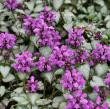
Dense spikes of rich purple flowers that appear above bright silvery foliage. USDA 3-8
109 found, showing page 5 of 8







